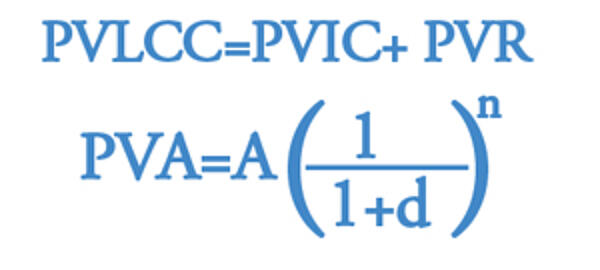Life-Cycle Cost Analysis
My customer asked for a life-cycle cost analysis according to ASTM A1068. What is she/he referring to?

When your customer is referring to a life-cycle cost analysis, he or she is asking for an in-depth comparison of the costs associated with two similar corrosion protection systems. The life-cycle cost analysis (LCC) uses information like expected inflation rates, initial costs, project design life, and rehabilitation costs to calculate the present value of each corrosion protection system. This method is particularly suitable for determining whether a corrosion protection system with a higher initial cost will be worth it in the long run. Specifiers, in theory, will pick the system with the lowest present value when presented with this information.
ASTM A1068 Standard Practice for Life-Cycle Cost Analysis of Corrosion Protection Systems of Iron and Steel Products, standardizes the life-cycle cost calculation. The basic procedure is defined as:
- Identify the project objectives, alternatives, and constraints. A parking garage, for example, may have the constraint of limited access for future maintenance. Alternatives would be a list of corrosion protection systems.
- Establish the basic assumptions. Those involved in the project will have to look at all the parameters involved and come to an agreement on their values. Values to be determined include treatment of inflation, project design life, comprehensiveness of analysis, and others. Information on determining these values can be found in A1068 section 6.3.
- Compile the data. This data will come from information on the corrosion protection systems specifically. The data needed here includes the initial costs, service life, and similar information. Compute the LCC for each alternative. Once all relevant data and values are agreed upon, specifiers will need to do the calculation for the present value of each corrosion protection system. Essentially, the present value of the initial cost (PVIC) and the present value of rehabilitation (PVR) are summed to acquire the present value of the life-cycle cost (PVLCC). And A is a single amount, d is the real discount rate, and n is the number of years from year zero. More information on the calculations and examples can be found in ASTM A1068.
- Evaluate the results. After the values calculated, an economic decision between the two corrosion protection systems in question can be calculated.

Hot-dip galvanizing does well in this type of cost-comparison tool as there is no maintenance cost associated with the system.
Life-cycle cost comparisons are a great tool when deciding between two alternatives for a projects corrosion protection system. They are also difficult and tedious. But there is good news! The AGA has already done most of the work for you with the online LCCC tool. This tool follows the standards of ASTM A1068 and gives the present value of many corrosion protection systems with minimal inputs.
So if your customer asks for a life-cycle cost comparison for hot-dip galvanizing against a paint system, the online LCCC tool is a great resource for that information.
© 2025 American Galvanizers Association. The material provided herein has been developed to provide accurate and authoritative information about after-fabrication hot-dip galvanized steel. This material provides general information only and is not intended as a substitute for competent professional examination and verification as to suitability and applicability. The information provided herein is not intended as a representation or warranty on the part of the AGA. Anyone making use of this information assumes all liability arising from such use.

